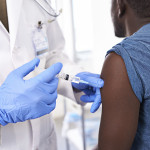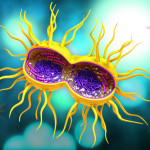APWA just can’t win. Next you’ll be hearing that bottled water isn’t safe. Well, guess what? You just did, according to the Natural Resources Defense Council (NRDC), a New York City–based environmental advocacy group. In its February report “Bottled Water: Pure Drink or Pure Hype?” the NRDC found that of the 103 brands it had analyzed, most were as pure as the crystal streams depicted in their ads (see “Good to the Last Drop” below), but a third had significant contamination (see “H20 No-No” below). A number, in fact, were simply tap water, bottled. And in one case, what was advertised as “spring water” actually came from a well in a parking lot near an industrial waste dump.
Among the contaminants detected in some products were heterotrophic plate count (HPC) bacteria, trihalomethanes and arsenic. HPC bacteria are the most worrisome, says Jeff Griffiths, MD, an expert on waterborne illnesses at Tufts University Medical School in Boston, who sees PWAs in his practice. High levels of HPC bacteria, while not harmful themselves, may indicate the presence of contaminants such as the Cryptosporidium parasite that causes cryptosporidiosis, or the Mycrobacterium Avium bacterium that causes MAC, both serious opportunistic infections. “As we understand more about HPC bacteria, we find something else that’s bad for immunocompromised people—either a new species or a new syndrome caused by an old species,” Griffiths says.
Trihalomethanes, chemical by-products of water chlorination (an otherwise health-promoting measure), have been linked in studies to spontaneous miscarriages and birth defects. “The epidemiological data aren’t the strongest,” says Griffiths, who represents the National Association of People With AIDS (NAPWA) on an Environmental Protection Agency water advisory committee. “But if I were a pregnant woman, I’d make sure the bottled water I drank didn’t contain trihalomethanes.”
Arsenic, says Griffiths, could cause cancer. “There’s the potential that the body of a PWA may not be able to fight off its carcinogenic effects.”
The NRDC wasn’t able to test the bottled waters it studied for Crypto or Giardia, which both can lead to potentially fatal diarrheal illnesses. In 1993, more than 100 people, most of them PWAs, died after a Crypto outbreak in Milwaukee’s public water system. “The current method of testing would require you to do it at the factory,” says Erik Olson, lead author of the NRDC study. “So we don’t know if those parasites are present.”
Industry representatives contend that bottled water is safe from Crypto and Giardia. Zail Dugal, spokesperson for the International Bottled Water Association, maintains that water from springs and wells is protected by law from “surface intrusions and other environmental influences” that might lead to Crypto and Giardia contamination. Bottlers using tap water “are encouraged to employ a government-recommended processing method for effective removal of microbial contaminants, including Crypto,” he adds.
Encouraged may be the operative word, though. The Food and Drug Administration, which regulates bottled water transported across state lines, has less than one full-time staffer dedicated to bottled water safety. (Some state governments regulate water bottled and sold within their borders, though.)
TAP WATER REPORT CARDS
For those who don’t want to spend up to $3 for every quart of bottled water they down, there’s finally a tool available to assess the risks from tap water. If your local waterworks serves more than 25 people, the federal Safe Water Drinking Act now requires it to provide a once-a-year accounting of its water quality. Reports must include information about the full spectrum, highest levels and sources of contaminants found. That’s especially important given an Environmental Protection Agency survey that found hazardous levels of toxic chemicals or bacteria in almost 10 percent of municipal water systems.
This sunshine policy is a step in the right direction, but the Clean Water Action Project, a national grassroots environmental group, is far from content. For one thing, the reports are only mailed to water bill recipients, so renters probably won’t get them. And the health effects of the levels listed in the reports aren’t detailed. “Having a number on a report doesn’t mean anything, unless you know what the potential health effects are,” says Gabrielle Giddings, a Philadelphia-based program coordinator for Clean Water Action.
Moreover, “water utilities are required to note in their reports that their water may not be safe for everybody,” Giddings notes. “But in some reports, that language is buried deep in the document, while a big header says, ‘Our Water Is Safe and Healthy.’”
Clean Water Action and other Philadelphia advocates are floating a suggestion to their local authority that they hope will catch on: a daily listing of the local drinking- water quality (based on tests already performed but not made public), similar to the daily air quality reports found in newspapers. “That way,” says Giddings, “if people have concerns, they can call the water company or their health care provider. We think the more people know, the less they have to fear.”
Good to the Last Drop
Deer Park
Naya
Rocky Mountain
San Pelligrino
Vons
H20 No-No
Alhambra
Heterotrophic-plate-count
(HPC) bacteria
Appollinaris
Arsenic
Black Mountain
HPC bacteria
Crystal Geyser
Arsenic
Lady Lee
Trihalomethanes
Lucky
Trihalomethanes
Master Choice
HPC bacteria
Poland Spring
HPC bacteria
Private Selection
Trihalomethanes
Publix
Trihalomethanes
Safeway
Trihalomethanes
Vittel
Arsenic
Volvic
Arsenic
*No contaminants of concern found
**Contaminants at levels above standard guidelines
source: natural resources defense council
What, Me Worry?
POZ doesn’t want you to be paranoid about every drop of water. But we wouldn’t be doing our job if we didn’t remind you that waterborne illnesses can be dangerous, particularly for those with fewer than 200 CD4 cells, or immunocompromised by chemotherapy. Here are some risk-reduction techniques for the way wary:
- For drinking, rinsing food or brushing teeth, use filtered or distilled water (see “Keep It Clean”), or boil water—even if it’s bottled, unless you are sure it’s been properly filtered. Maintain a full, rolling boil for 10 minutes. Store boiled water in a container pre-rinsed with clean water.
- When cooking, use boiled, filtered or distilled water.
- Make ice cubes from boiled, filtered or distilled water. Stay away from restaurant tap water and ice.
- Be certain that dishes and utensils are air-dried before use.
- Install filters that remove waterborne organisms in your shower and the sink where you brush your teeth.
- Avoid swallowing water in baths or showers.
- Close the toilet lid before you flush, to avoid exposure to microorganisms thrown into the air.
- Steer clear of swims in rivers, lakes or public pools—or at least avoid swallowing water. Note that chlorine in the amounts usually found in public pools doesn’t kill Crypto. But ocean dips are OK.
Keep it Clean
Jeff Griffiths, MD, of Tufts recommends using one of three methods to obtain pure drinking water:
- Look for bottled waters with labels indicating the water has been filtered for Crypto.
- Use distilled water—it has been steamed and condensed and therefore should be free of any dangerous microbes.
- Buy a high-quality water filtration system (such as Culligan, Multi-Pure, Sierra Pure and the less expensive Pur Plus). Faucet attachments cost anywhere from $40 to $900 and are cheaper than bottled water over the long term. Make sure the filter has openings labeled “one micron absolute” (not “one micron”) and is certified as “NSF Standard 53” for “cyst removal” or “cyst reduction.” (Most stand-alone models, such as Brita, don’t meet these specifications.) Important: Change filters as recommended, or you may actually worsen contamination.






Comments
Comments